13 Stats About the Growing Cannabis Industry Any Investor Should Know
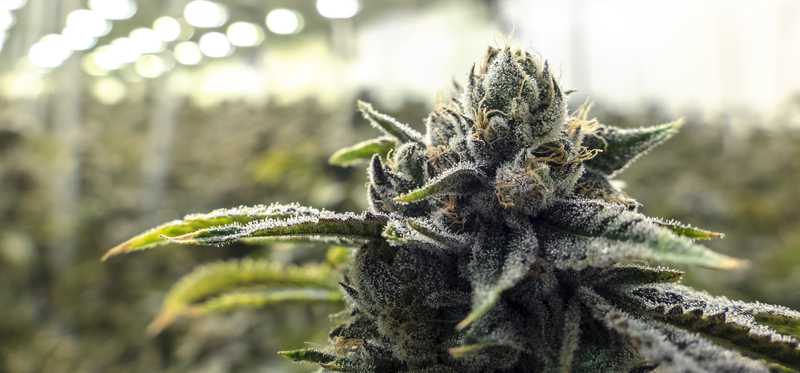
13 Stats About the Growing Cannabis Industry Any Investor Should Know
Wall Street is seeing green
Right now, there’s simply not an investment opportunity with more buzz or potential than the rise of legal marijuana.
Having spent decades in the shadows, the recreational legalization of cannabis in Canada has brought the green rush into the spotlight and confirmed that the pot industry is here to stay over the long haul. Since 2016, some of the largest and most popular marijuana stocks have delivered gains upwards of 2,000%, 3,000%, and even north of 7,000%. And the scary thing is, this industry, and pot stocks in general, look to just be getting started.
But investing in the budding cannabis industry requires a keen understanding of where opportunity lies, and how large that opportunity could ultimately be. With that being said, here are 13 stats that investors should fully be aware of that demonstrate the promise, peril, and potential of the cannabis industry.
Previous
Next

1. Two out of three Americans support legalization
Let’s begin with perhaps the most important statistic of all: support for legalization.
Back in 1995, national pollster Gallup found that a mere 25% of the American public favored the idea of a broad-based legalization of cannabis. But by October 2018, support for legalization had jumped to an all-time high of 66%.
What’s more, a separate poll from Quinnipiac University in March 2019 found that an overwhelming 93% of U.S. respondents support the idea of a physician being able to prescribe medical marijuana to patients, including 99% of all respondents aged 18 to 34.
ALSO READ: Is the Marijuana Industry Recession-Proof?
Previous
Next

2. 78% of young adults support legalizing weed
To build on the previous point, support for legalization tends to vary by age and political party affiliation.
With regard to age, favorability toward legalization has an inverse relationship with age. The older the survey-takers are, the more likely they are to not support legalizing marijuana. In the aforementioned Gallup poll that saw 66% of respondents favor the recreational legalization of weed, 78% of 18-to-34 year-olds supported the idea, with only 59% of seniors aged 55 and over in support of legalization. This suggests that the younger generation could play a big role in the expansion of cannabis in the United States, as well as in the long-term growth potential of the industry.
It’s also worth pointing out that 75% of Democrats and 71% of Independents support the legalization of marijuana in the U.S., per Gallup, compared to just 53% of Republicans. This significantly more adverse view of pot from self-identified members of the GOP is a big reason cannabis reform legislation hasn’t advanced on Capitol Hill.
Previous
Next
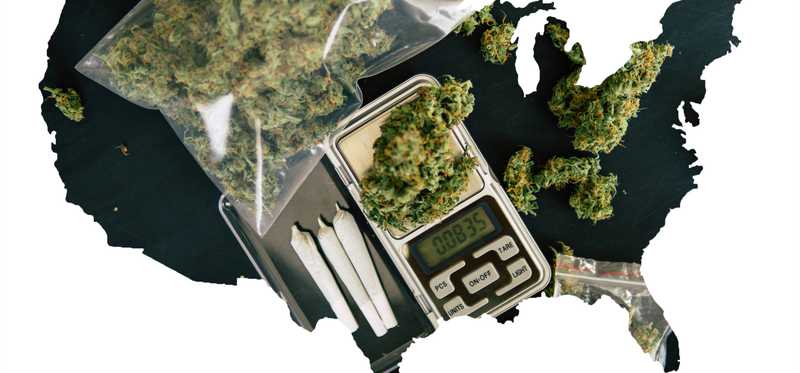
3. 33 U.S. states, and more than 40 countries, have legalized in some capacity
As noted earlier, the marijuana industry is no longer hiding in the shadows. Within the U.S., 33 states have legalized medical cannabis in some capacity, with 10 states also allowing adult consumption. This will soon be 11, with the Illinois Legislature recently approving recreational weed through the legislative process, and the bill simply awaiting Gov. J.B. Pritzker’s (D-Illinois) signature.
Beyond the confines of the U.S., there are more than 40 countries worldwide that allow medical cannabis, or cannabis-related products, to be prescribed by a physician for select ailments, as well as two countries that’ve given the green light to adult-use consumption (Canada and Uruguay). The market for marijuana is budding, but it’s still incredibly nascent, demonstrating the promise and opportunity that could await.
Previous
Next
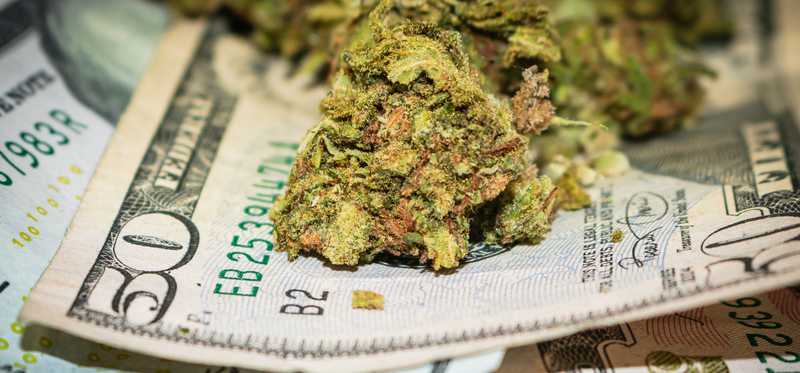
4. Up to $30 billion in U.S. sales by 2023
Although estimates vary, there’s no denying that the United States is the crown jewel of the cannabis legalization movement. Whereas most Wall Street estimates peg legalized Canadian weed sales at $5 billion to $6 billion by 2022, the newest “Marijuana Business Factbook” report by Marijuana Business Daily finds that legal U.S. sales ranged between $8.6 billion and $10 billion last year. This means the U.S. is already larger than the Canadian market will be a few years from now -- and it’s going to get a lot bigger.
According to “Marijuana Business Factbook,” legal sales in the U.S. are expected to advance to between $25 billion and $30.4 billion by 2023, which will be comprised of $6.9 billion to $8.4 billion in medical cannabis sales, and $18.1 billion to $22 billion in recreational sales. Overall, medical cannabis sales should more than double over the next five years, while adult-use revenue may triple or quadruple over the same time frame. Even though recreational users are typically a lower margin customer for pot stocks than medical patients, there’s still strength in numbers.
Previous
Next
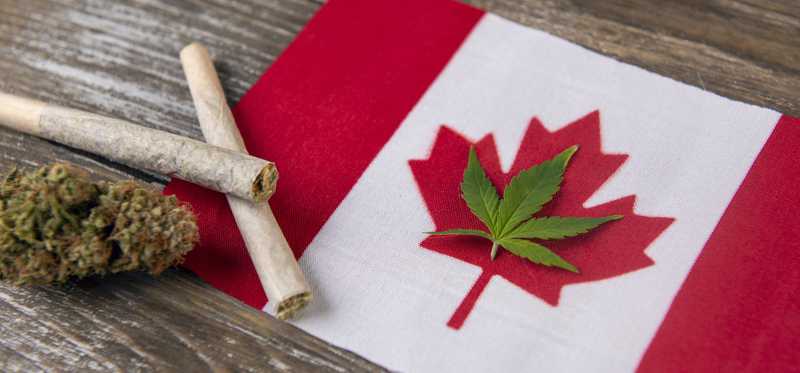
5. The black market still controls 71% of all Canadian sales
An important stat to remember as a cannabis investor is that it’s practically impossible to drive out illicit producers and retailers as long as there are federal regulations and taxes in place.
In Canada, Prime Minister Justin Trudeau instituted a low excise tax rate of 10% on recreational weed sales. This reasonably low tax rate is designed to help drive illicit producers out of the market. But black market marijuana growers don’t have wait for cultivation, processing, distribution, or sales license approvals like legal-channel pot companies do. Black market cannabis also isn’t subject to the excise tax or Canadian federal income tax rates. That means black market weed can continually undercut legal cannabis on price.
Perhaps it’s no surprise that analysts Oliver Rowe and Ben Isaacson at Scotiabank foresee the black market controlling 71% of Canadian pot sales in 2019. Even after supply-chain issues are resolved in 2020, this analyst duo still sees the black market controlling 37% of aggregate weed sales. Long story short, as long as there are significant taxes and substantial licensing delays associated with the cannabis industry, there will always be a market for illicit production that “steals” revenue from legal channels.
Previous
Next

6. Black market pot is 36% cheaper per gram in Canada
Just how much of a pricing undercut are we talking about for the black market? According to self-reported figures by cannabis consumers to Statistics Canada, the average price per gram in regulated dispensaries was 9.99 Canadian dollars, through March 31. Comparatively, the average price per gram for black market marijuana was reported as CA$6.40, or a nearly 36% discount to legal-channel cannabis.
Understandably, this wide gap should wind up shrinking a bit over the next 12 months as new legal production hits the market. Supply-chain issues, such as a backlog of more than 800 licensing applications that are awaiting approval from regulatory agency Health Canada, have bogged down how much pot is making it onto dispensary shelves. Simple supply-and-demand economics suggests that when demand outstrips supply, prices should rise -- and that’s exactly what we’re seeing.
Thankfully, Health Canada is adopting a new policy that requires cannabis-growing facilities to be completed prior to submitting a cultivation application. This new policy should move aside a number of underfunded grow projects and allow the largest growers in the industry -- i.e., Canopy Growth (NYSE: CGC) and Aurora Cannabis (NYSE: ACB) -- to shine.
Previous
Next

7. $166 billion global peak sales potential
Many years down the road, the cannabis industry will be generating big bucks. According to Bank of America (NYSE: BAC) analyst Christopher Carey, the pot industry could one day hit peak annual sales of $166 billion, all while disrupting industries that are, today, generating $2.6 trillion in yearly sales.
If you’re looking for growth projections that aren’t decades into the future, we can turn to global sales projections from either Jefferies or Cowen Group (Nasdaq: COWN). Jefferies analyst Owen Bennett and his team foresee a base projection of $50 billion in global annual sales by 2029. Meanwhile, Vivian Azer and her team at Cowen are forecasting $75 billion in yearly worldwide sales by 2030, representing a sixfold increase in sales over a 12-year period. No matter the forecast, the gist is the same: Cannabis is now big business.
Previous
Next

8. More than 50% of global sales are oils
Generally speaking, when we think about marijuana, we probably envision dried cannabis flower. Although smoking this dried flower was the most popular means of consumption a few decades ago, it is no longer.
In an interview with CNBC earlier this year, Curaleaf Holdings’ (NasdaqOTH: CURLF) executive chairman, Boris Jordan, dished on the overall makeup of traditional flower sales to cannabis oil sales worldwide. Said Jordan:
“What's very interesting is that if you were to look at the cannabis market even five years ago, 95% of all sales in cannabis in the United States, or around the world, was in flower form. If you look at it today, over 50% is cannabis oil. Cannabis oil is definitely the dominant product today in the market. People don't want to really smoke. There are some of what we call 'cannabis enthusiasts' that still smoke cannabis, but for the most part, particularly if you look at the younger generations that are growing older, or new people that are coming into the market, they tend to veer toward cannabis oils and cannabis products rather than the flower.”
This is an important statement, because oils and other derivatives (edibles, infused beverages, capsules, topicals, concentrates, vapes, and so on) are a considerably higher-margin product than traditional dried cannabis, and therefore a more attractive target for marijuana stocks.
Previous
Next

9. 147% CBD sales growth through 2022
Speaking of derivatives, there’s perhaps no hotter trend right now than products containing cannabidiol (CBD), the nonpsychoactive cannabinoid best known for its perceived medical benefits. Since CBD can be extracted from cannabis or hemp, and used in edibles, beverages, topicals, and a host of other consumption options, it’s the perfect high-margin product for marijuana stocks to use to attract new consumers who might otherwise not use cannabis products.
Just how big could the CBD movement be? According to the Brightfield Group, CBD-related sales in the U.S. are forecast to grow from $591 million in 2018 to $22 billion by 2022. That’s a compound annual growth rate of 147%, which demonstrates why CBD is such a hot-button topic among investors.
Previous
Next

10. Zero overdose-related deaths
Another reason cannabis has gained quite the audience, at least from a medical perspective, is that marijuana overdoses have directly led to zero patient deaths.
Meanwhile, the National Institute on Drug Abuse (NIDA) points out that, in 2017, opioid overdoses were the direct cause of more than 47,000 deaths (about 128 people per day). And this figure continues to grow, with NIDA finding that more than 130 people per day are dying from opioid-related overdoses, as of January 2019. The idea here is that medical cannabis and cannabinoids could be a possible solution reducing opioid use, abuse, and overdose-related deaths.
Then again, it’s important to understand that medical cannabis is no shoo-in to be effective as a replacement for opioids. In a number of smaller-scale university studies, medical marijuana and various cannabinoids have demonstrated positive correlations in treating epilepsy, pain, anxiety, and glaucoma, to name a few indications. However, plenty of additional study is needed to understand the full scope of benefits offered by medical marijuana and its cannabinoids.
Previous
Next

11. Only two recognized benefits of cannabinoids and cannabis by the FDA
On the other end of the medical spectrum, it’s important for cannabis investors to understand that the U.S. Food and Drug Administration (FDA) recognizes only two official benefits of cannabis and cannabinoids.
Following the June 2018 approval of GW Pharmaceuticals’ (Nasdaq: GWPH) Epidiolex, the FDA recognizes this oral CBD drug as a treatment for Dravet syndrome and Lennox-Gastaut syndrome (two rare types of childhood-onset epilepsy). In multiple phase 3 trials, GW Pharmaceuticals’ lead drug reduced seizure frequency from baseline by roughly 30% to 40%, and more than handily outpaced the placebo it was pitted against.
But beyond GW Pharma’s Epidiolex, marijuana and cannabinoids are not viewed as having medical benefits by the FDA. That makes a possible rescheduling of cannabis, rather than a complete removal from the controlled substances list (i.e., a de-scheduling), potentially tricky.
Previous
Next
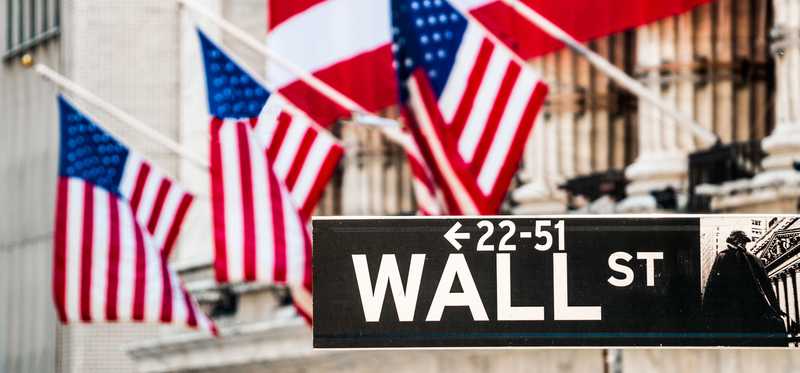
12. 16 billion-dollar pure-play pot stocks
Although the legal pot industry is relatively nascent, you wouldn’t know that by looking at marijuana stock valuations. Right now, there are 16 pure-play pot stocks with a market cap of at least $1 billion. Topping that list is Canopy Growth, the only large-cap marijuana stock, with a market cap of approximately $15 billion.
In addition to lofty cannabis stock valuations, close to a dozen pot stocks now trade on either the New York Stock Exchange (NYSE) or Nasdaq (Nasdaq: NDAQ). Uplisting to a major exchange like the NYSE or Nasdaq can really improve visibility, volume-based liquidity, and essentially rolls out the red carpet for Wall Street to offer coverage and/or invest in pot stocks.
Keep in mind that most marijuana stocks aren’t allowed to list their common shares on either of these major U.S. exchanges. That’s because cannabis is still an illicit substance at the federal level in the Unites States. Only weed companies that aren’t involved in U.S. cannabis have a shot of listing their shares for trading on the NYSE or Nasdaq.
Previous
Next

13. Only four profitable pure-play marijuana stocks
Investors should also be aware that most marijuana stocks are losing money right now. Excluding one-time benefits and fair-value adjustments, there are only four pot stocks that are profitable on a recurring operating basis: Charlotte’s Web (NasdaqOTH: CWBHF), CV Sciences (NasdaqOTH: CVSI), Trulieve Cannabis (NasdaqOTH: TCNNF), and Innovative Industrial Properties (NYSE: IIPR).
The first two, Charlotte’s Web and CV Sciences, produce and distribute hemp-derived CBD products across the United States, with Charlotte’s Web pushing its topicals, capsules, and oils into roughly 6,000 retail doors, and CV Sciences surpassing 3,300 retail stores in the first quarter.
Trulieve Cannabis is a multistate dispensary operator in the U.S. with a laser focus on Florida. With 28 open dispensaries in the Sunshine State, Trulieve has had little issue building its brand in the medical marijuana-legal state.
Lastly, Innovative Industrial Properties is a real estate investment trust that leases medical cannabis growing and processing assets for long periods of time, thereby reaping the rewards of rental income, and regularly adding new properties.
Previous
Next

The intangible stat: Time
But there’s one more cannabis industry stat that investors need to be familiar with. An intangible stat known as time.
Although the marijuana industry is expected to deliver significant sales growth over the next decade, let’s not lose sight of the fact that this is still a relatively new industry, at least from a legal perspective, and it’s going to take time to mature. Supply-chain issues in Canada, and high tax rates buoying illicit producers in California, are good examples of the industry’s early teething pains in action.
In order for investors to truly reap the rewards of the green rush, they’re going to need to be patient, remain invested for the long haul, and be willing to deal with what could be volatile swings in cannabis stocks.
Sean Williams owns shares of Bank of America. The Motley Fool recommends Innovative Industrial Properties and Nasdaq. The Motley Fool has a disclosure policy.
Previous
Next
Invest Smarter with The Motley Fool
Join Over Half a Million Premium Members Receiving…
- New Stock Picks Each Month
- Detailed Analysis of Companies
- Model Portfolios
- Live Streaming During Market Hours
- And Much More
READ MORE
HOW THE MOTLEY FOOL CAN HELP YOU
-
Premium Investing Guidance
Market beating stocks from our award-winning service
-
The Daily Upside Newsletter
Investment news and high-quality insights delivered straight to your inbox
-
Get Started Investing
You can do it. Successful investing in just a few steps
-
Win at Retirement
Secrets and strategies for the post-work life you want.
-
Find a Broker
Find the right brokerage account for you.
-
Listen to our Podcasts
Hear our experts take on stocks, the market, and how to invest.
Premium Investing Services
Invest better with The Motley Fool. Get stock recommendations, portfolio guidance, and more from The Motley Fool's premium services.